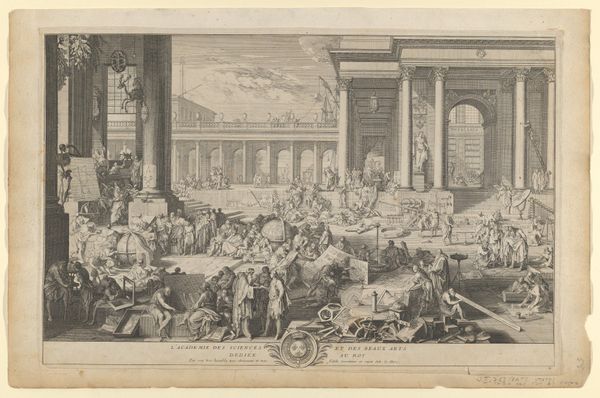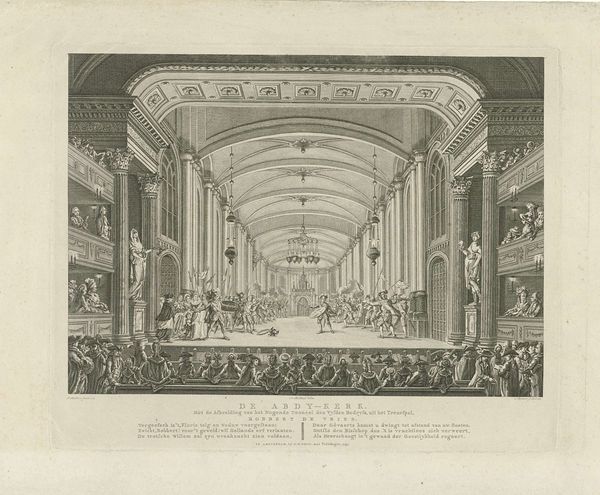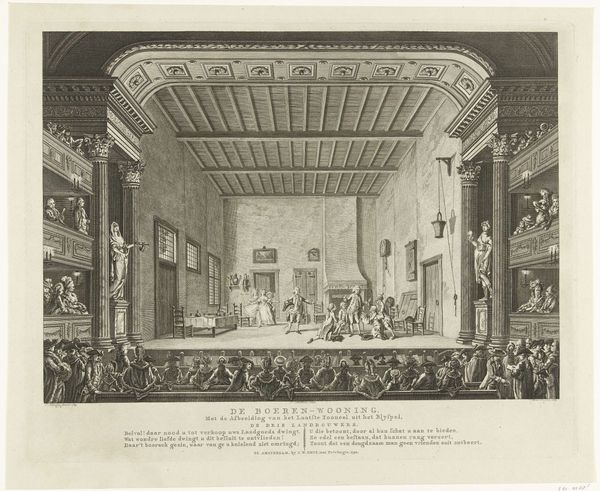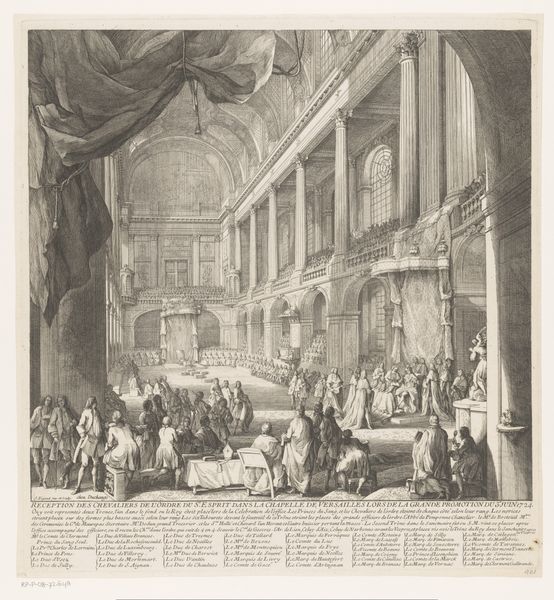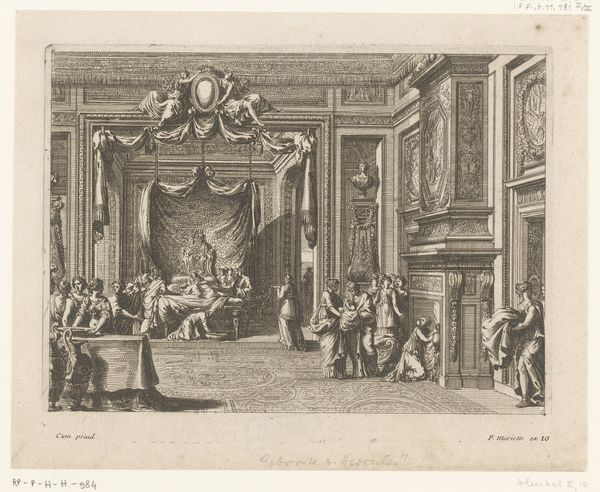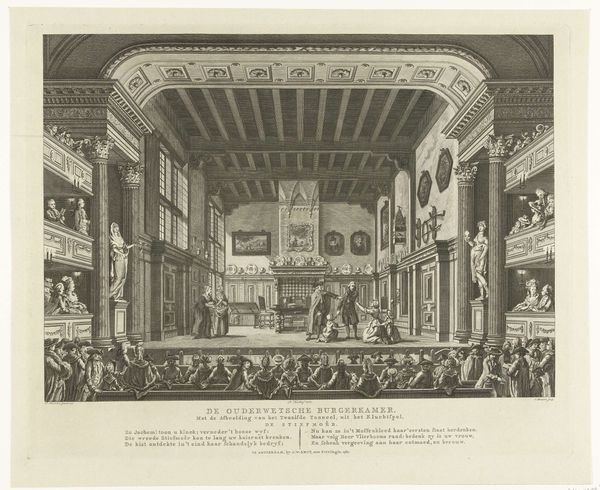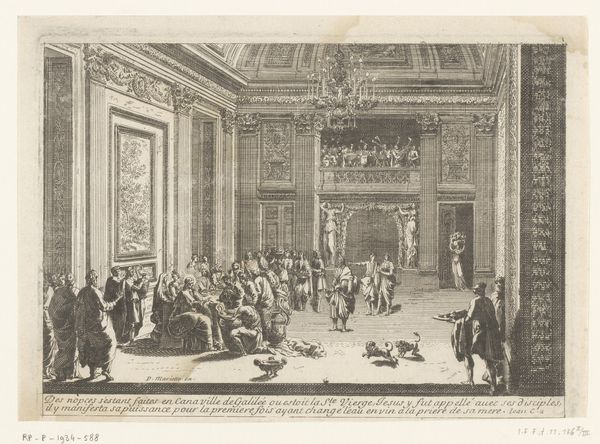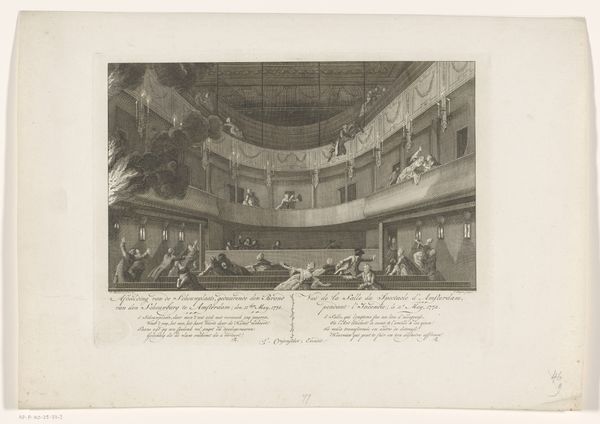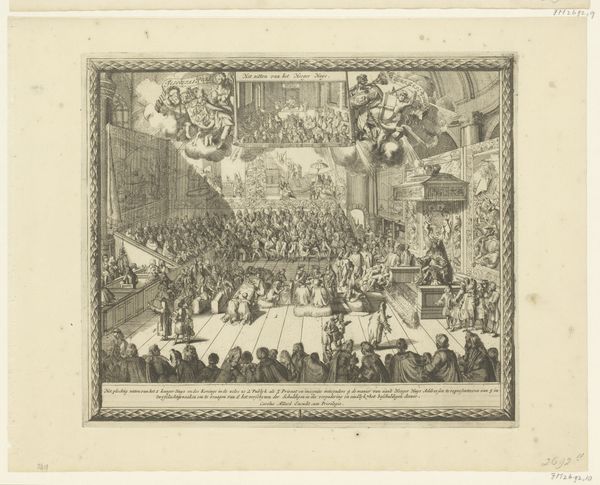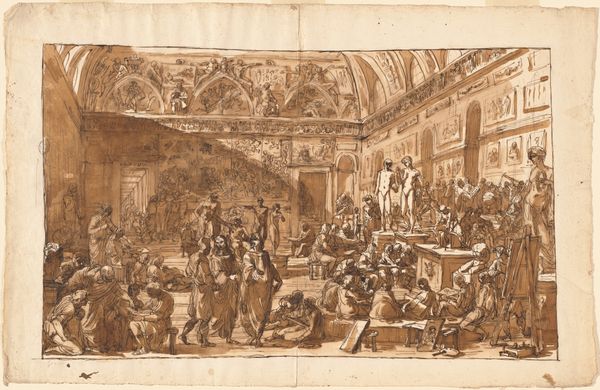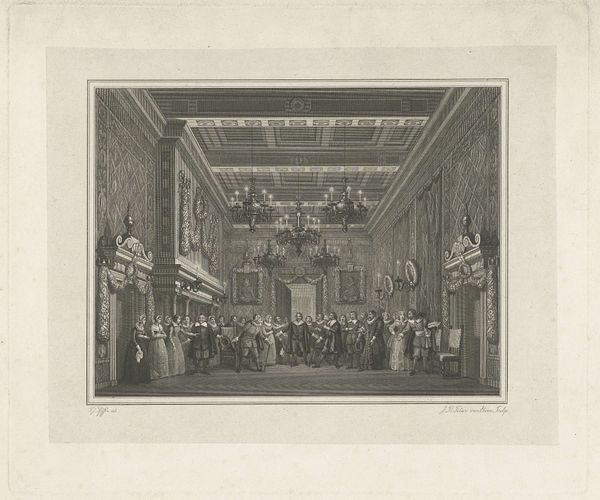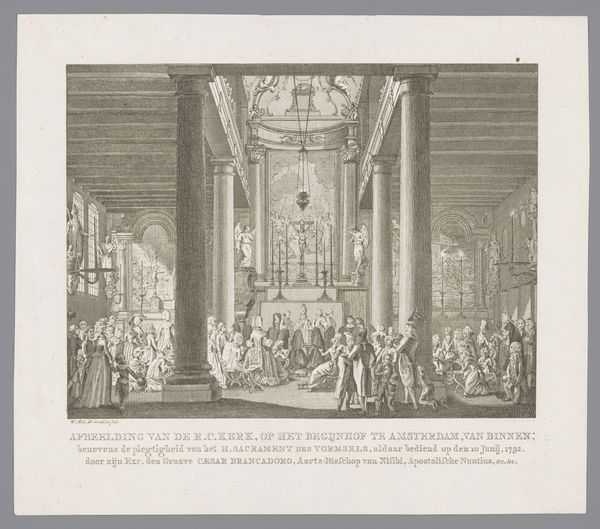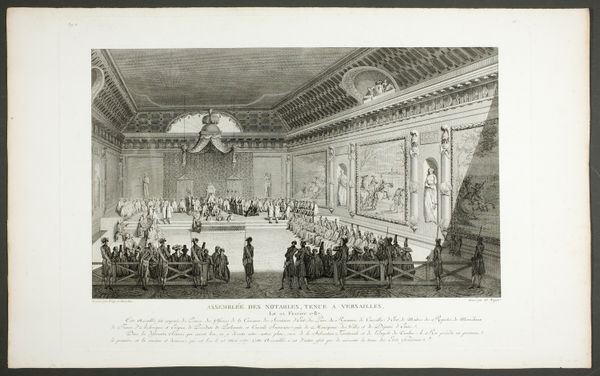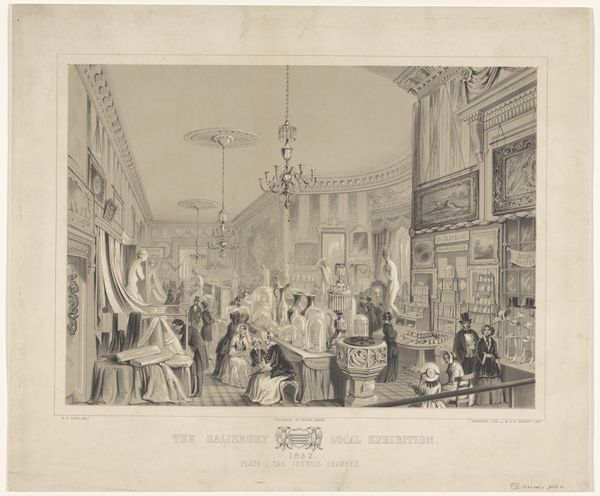
print, engraving
#
neoclacissism
#
ink paper printed
# print
#
cityscape
#
genre-painting
#
history-painting
#
engraving
Dimensions: height 460 mm, width 549 mm
Copyright: Rijks Museum: Open Domain
Curator: Let’s turn our attention now to "Opening van de Nationale Vergadering, 1796," a print made in 1797, currently residing here at the Rijksmuseum. Editor: Whoa. That's a lot of tiny people crammed into a very serious-looking room. I get a kind of "eye of the storm" vibe from the composition, all that stillness despite the crowd. Curator: Indeed. Its detailed engraving illustrates the Neoclassical style prevalent at the time, favoring clarity and order. Note the emphasis on symmetry within the architectural space, further reinforcing the ideals of the Enlightenment through its visual language. Semiotics help us to grasp this intended communication... Editor: Enlightenment order meets real-world chaos, maybe? It’s an impressive interior, don't get me wrong—columns, fancy chandeliers… but those tiers of spectators seem ready to riot or, at the very least, gossip relentlessly. It’s less a temple of reason and more a slightly stressful family gathering to my eye. Curator: The contrast is subtle, yet purposeful, wouldn't you agree? The artist masterfully directs our gaze across varying representational modes, drawing parallels between the spectators' gazes and that of the contemporary viewer observing the unfolding political drama through the very print media itself. Editor: Absolutely, like peeking through a keyhole into history. Makes you wonder about all the hidden agendas and power plays happening beneath the surface, the sort of things the "ink paper printed" can’t quite capture. Curator: Precisely, and such tensions play across its entire spatial matrix. As this artwork reveals to our semiotic reading, within a few square inches, "Opening van de Nationale Vergadering" condenses a revolutionary spirit within its period-informed production, reception and socio-historic situation. Editor: Well, for me, it's a fascinating window into a pivotal moment, neatly packaged in ink. It makes you reflect on the very human theater of governance. I see a lot of theatricality here.
Comments
No comments
Be the first to comment and join the conversation on the ultimate creative platform.
